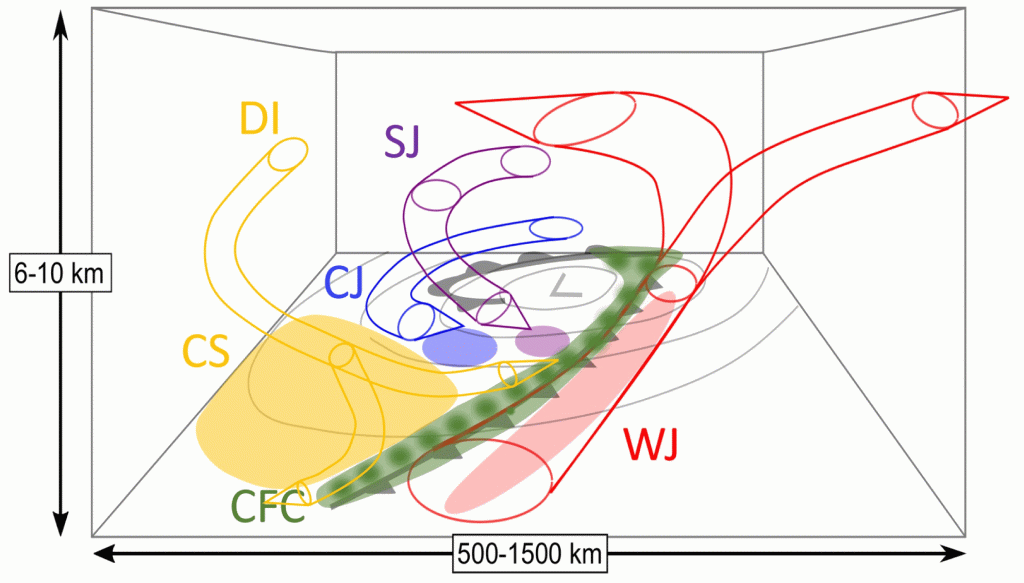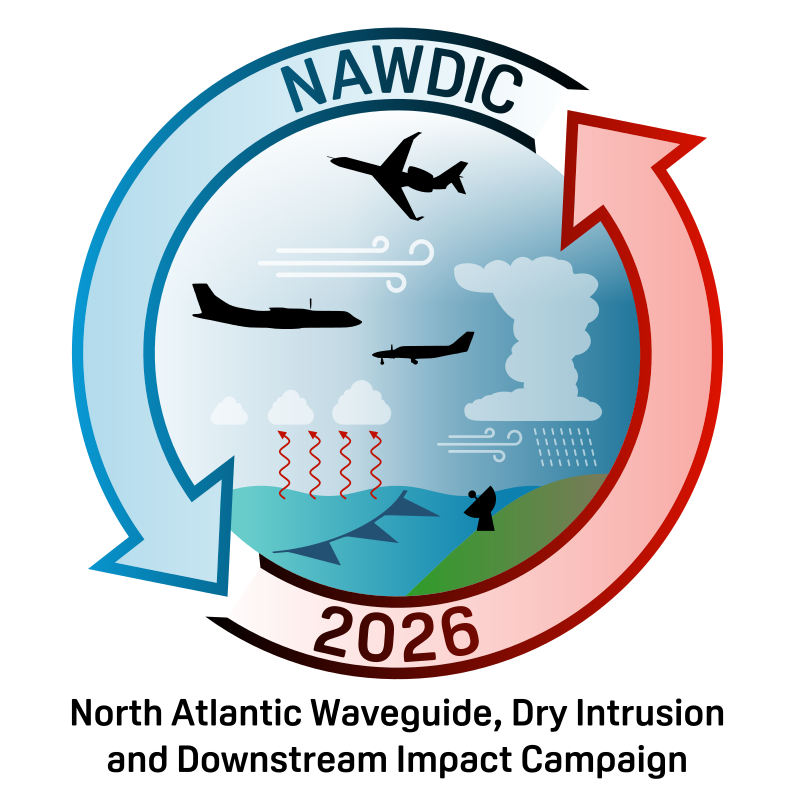
Conceptual model of the 3D structure of a Shapiro-Keyser cyclone showing the warm-conveyor-belt jet (WJ, red), cold-conveyor-belt jet (CJ, blue), sting jet (SJ, magenta), cold frontal convection (CFC, green), dry intrusion (DI, gold) and cold sector (CS, gold). In each case, the region of strong surface winds is indicated by a filled ellipse. Adapted from Eisenstein et al. (2022)
Surface damaging winds associated with extratropical cyclones may occur in different locations relative to the storm center depending on the type of storm and the time in the life cycle of the storm (see visual summary in the above figure). The primary objective of DICHOTOMI is to examine mid- to lower tropospheric and boundary layer processes that lead to damaging winds at the surface with a focus on two different regions of extratropical cyclones: (1) the cloud head where SJs occur and (2) the cold sector where DIs can destabilize the boundary layer and increase wind gusts. Several parameters playing a role in the downward momentum transport have been identified in the literature: static stability, wind shear, evaporative cooling, surface fluxes, surface roughness but the relative roles of these parameters need to be clarified using more observations, because our current knowledge mainly relies on very few observations and very few case studies. To achieve this ambitious goal, the DICHOTOMI partners will play an active role in the NAWDIC international field campaign by deploying two research aircraft and various ground-based remote-sensing instruments in Ireland and Brittany (see field campaign objectives and plan). After the field campaign, various numerical experiments will be performed with a hierarchy of atmospheric circulation models to answer the following research questions:
1. What is the relative role of stability, shear, evaporative cooling, surface roughness, and surface fluxes for downward transport of momentum?
2. How are the relative roles impacted by the meso-scale variability of the weather systems and by the underlying lower boundary conditions (e.g., sea surface temperature, surface roughness)?
3. How well are the relative roles represented in modelling systems and what is the required resolution to represent the underlying processes?
4. To what extent are the relative roles influenced by the formulation of subgrid-scale parameterisation schemes (microphysics, turbulence, surface turbulent fluxes, shallow convection) in state-of-the-art limited area models (LAM)?
